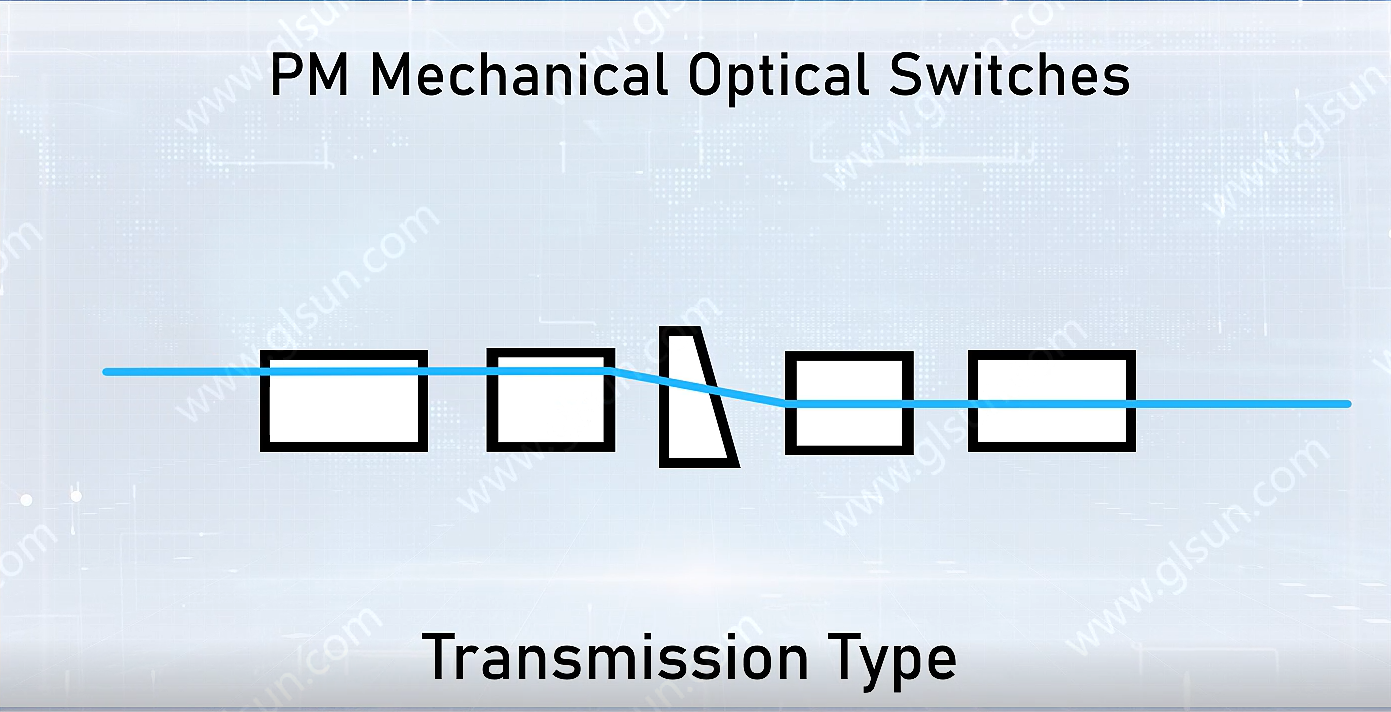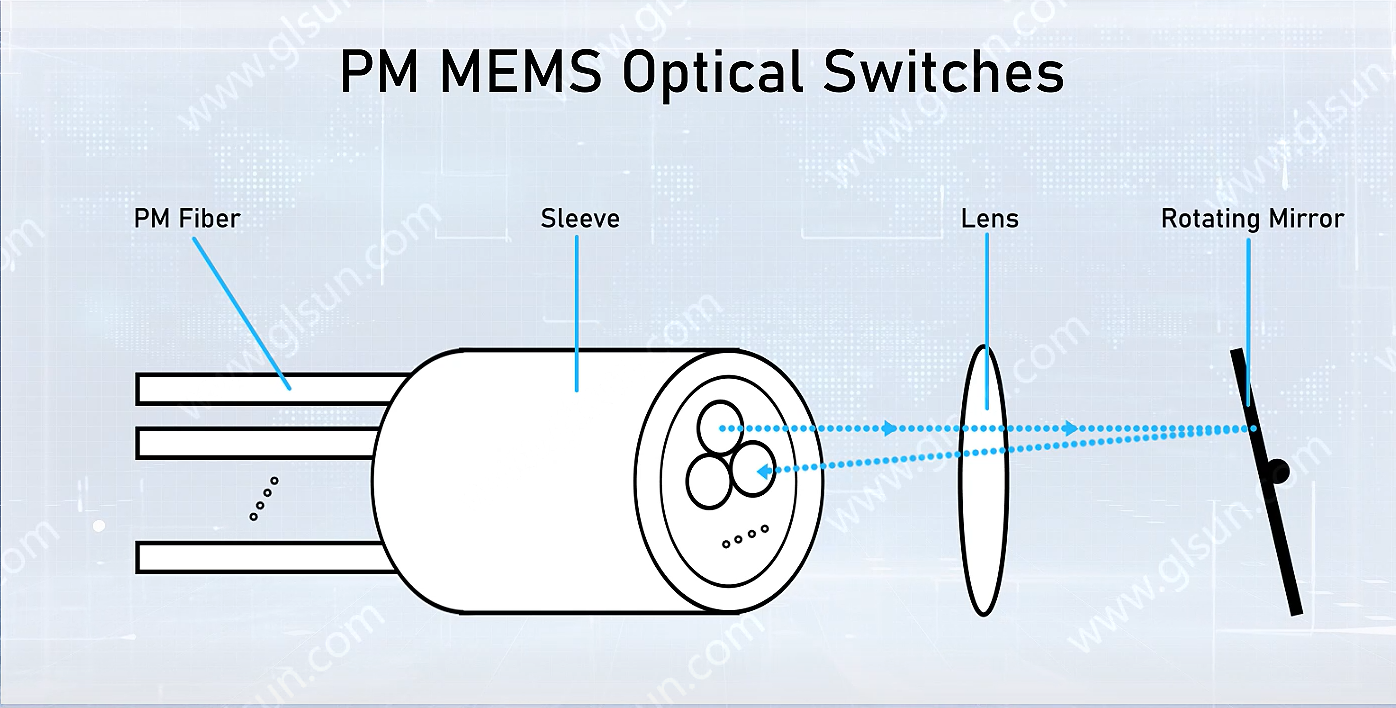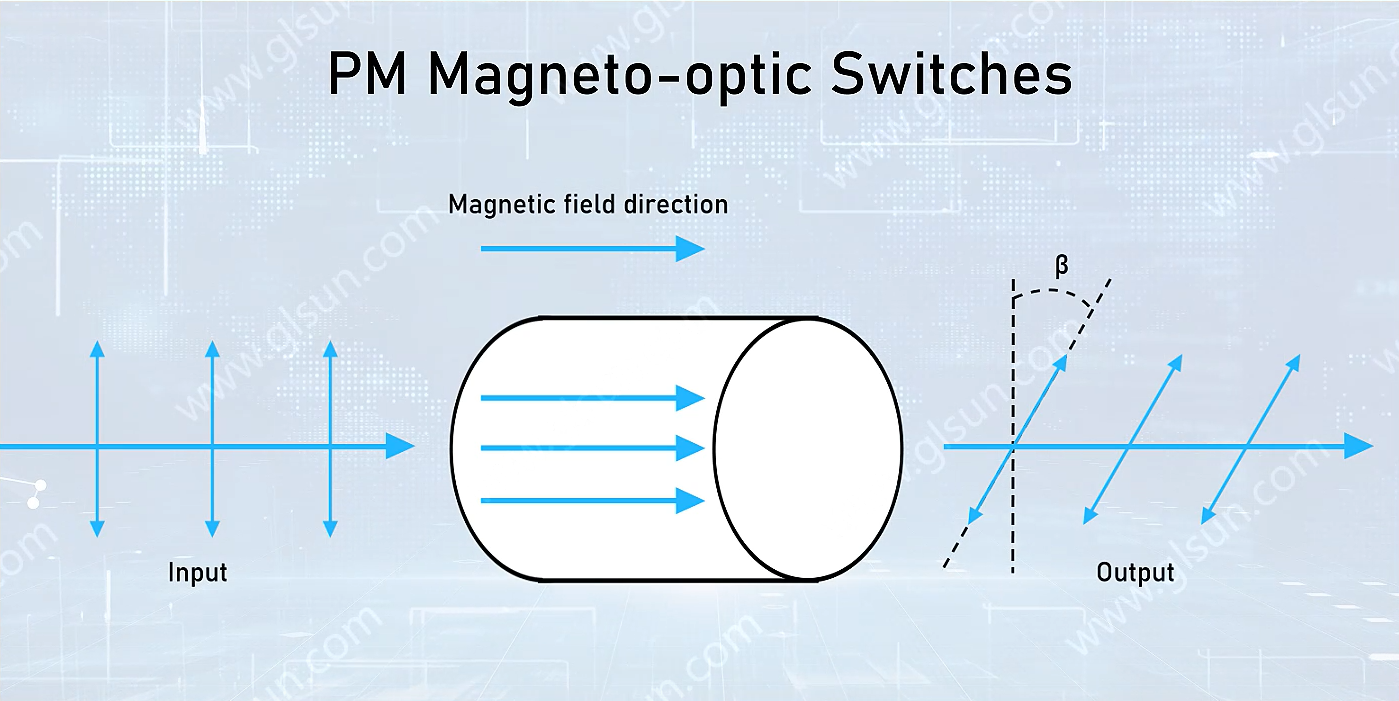Fiber Optic Tech
Quick to Know Polarization Maintaining Optical Switch
In modern high-precision applications such as optical communication, fiber sensing, and quantum optics, the transmission quality of optical signals directly impacts the overall system performance. Light propagation within optical fibers depends not only on signal intensity but also crucially on the polarization state of the light. As technology advances, the transmission of optical signals through complex fiber networks can experience polarization changes due to factors like fiber bending, temperature fluctuations, and mechanical stress. These changes can induce signal distortion and even affect the accuracy of data transmission.
In certain high-precision applications, including quantum communication, precision sensing, and high-end optical measurement systems, the stability of the polarization state directly relates to the system's reliability and performance. Maintaining a stable and controllable polarization state of light waves becomes paramount in these applications.
Traditionally, due to birefringence effects within fibers and the influence of external environmental factors, light waves are prone to polarization changes during transmission. This can lead to signal degradation and even loss. Therefore, devices capable of maintaining the stability of the optical signal's polarization state, namely polarization-maintaining (PM) devices, especially PM optical switches, have become essential components in these fields.
A polarization-maintaining optical switch is an optical device capable of switching optical signals between different optical paths while preserving the polarization state of the light throughout the process. It is designed to achieve precise control and switching of light signals with specific polarization states within fiber optic networks.
The PM switch can transfer an optical signal from one output port to another without altering the polarization state of the input light wave, thus ensuring the polarization stability of the optical signal during transmission. Compared to conventional optical switches, PM switch designs are more intricate, requiring that the polarization direction of the light signal remains stable during the switching process to prevent signal distortion or information loss.
These devices are typically employed in optical systems demanding high stability and fidelity, such as high-performance optical communication systems, precision fiber optic sensors, lidar systems, as well as quantum computing and quantum communication systems.
Types of Polarization Maintaining Optical Switches
Mechanical Polarization-Maintaining Optical Switches: These switches achieve optical path switching through the physical movement of optical fibers. They typically offer high reliability and long operational lifespans. Their operating principle involves physically redirecting the light signal by mechanically moving the fiber, often using a moving prism or directional coupler to guide the input light to the desired output port.

Polarization-Maintaining MEMS Optical Switches: Based on micro-electro-mechanical systems (MEMS), these switches utilize microscopic mirrors or mirror arrays to the propagation direction of the light beam, thereby achieving optical path switching.

Polarization-Maintaining Magneto-Optic Switches: As a type of solid-state optical switch with no moving components, magneto-optic switches operate based on the Faraday effect. They leverage electromagnetic induction principles and the Faraday rotation effect to manipulate the polarization state of the incident light beam. By incorporating birefringent polarization beam splitters, the light beam's propagation path is altered, ultimately achieving optical path switching.

Working Principle
The core principle of a polarization-maintaining (PM) optical switch lies in preserving the stability of the optical signal's polarization state. Taking a mechanical PM optical switch as an example, its typical structure consists of input fibers, output fibers, a polarization controller, and a mechanical mirror for optical path switching.
Upon entering the switch, the light signal first passes through the polarization controller, which adjusts its polarization state to ensure uniformity before reaching the reflecting mirror. Subsequently, based on the control signal, the mechanical mirror reflects the light signal to the designated output fiber. Throughout this process, the design of the polarization-maintaining components and the optical path ensures that the polarization state of the light signal remains unchanged during switching.
To guarantee polarization stability, the employed optical fibers must possess excellent polarization-maintaining properties. This means that the two orthogonal polarization modes within the fiber exhibit distinct propagation characteristics, thereby preserving the original polarization state of the light wave during transmission.
Application Scenarios
Due to its unique properties, polarization-maintaining optical switches find extensive applications in various fields:
High-speed Fiber Optic Communication Systems: In long-haul, high-capacity fiber optic communication networks, polarization-maintaining optical switches can be used to improve the signal-to-noise ratio and transmission efficiency. The stability of the polarization state is crucial for signal modulation and demodulation. Polarization-maintaining optical switches ensure that signals do not lose polarization information when switching between different fibers, guaranteeing the quality and efficiency of communication.
Quantum Communication and Quantum Computing: Quantum communication relies on the polarization state of photons to encode and transmit information. Any change in the polarization state can lead to information loss or bit errors. Therefore, polarization-maintaining optical switches are key devices for achieving precise optical path control and information transmission in quantum optics experiments and quantum communication networks.
Fiber Optic Sensing: In the measurement of physical quantities such as temperature, pressure, and stress, using polarization-maintaining optical switches can help reduce signal interference and improve the sensitivity and reliability of sensors. The accuracy of the sensing signal depends on the polarization state of the optical signal. Polarization-maintaining optical switches can achieve accurate switching of signals in multi-channel sensing systems, avoiding measurement errors caused by changes in the polarization state.
LiDAR Systems: LiDAR is used for long-range detection and imaging, and has high requirements for the quality of optical signals. Polarization-maintaining optical switches can ensure that the polarization state of the laser remains consistent when switching between different detection paths, thereby improving detection accuracy and image quality.
With the advancement of technology and the ever-increasing demands for technology, the research and development of polarization-maintaining optical switches has shown the following trends:
Miniaturization and Integration: With the development of micro-electro-mechanical systems (MEMS) technology, future polarization-maintaining optical switches will be smaller, lighter, and easier to integrate into various devices. This not only reduces the size and power consumption of the device but also improves the stability and reliability of the system.
Faster Switching Speed: As communication speeds continue to increase, the demand for faster switching speeds of polarization-maintaining optical switches is also growing. Future polarization-maintaining optical switches will adopt more advanced materials and technologies, such as ultrafast electro-optic materials and nanophotonic devices, to achieve sub-nanosecond fast switching.
Lower Insertion Loss: In high-performance optical communication and quantum computing, the loss of optical signals directly affects system performance. Therefore, reducing insertion loss will be an important direction for the future development of polarization-maintaining optical switches. Through optimized design and material selection, polarization-maintaining optical switches will achieve lower insertion loss and higher stability.
Wider Range of Applications: With the advancement of technology, the applications of polarization-maintaining optical switches will not be limited to the current communication and measurement fields but will also extend to more emerging fields, such as optical computing, holographic displays, and biomedical imaging.
In conclusion, polarization-maintaining optical switches, as crucial components in high-precision optical systems, play an indispensable role in modern communication, sensing, and quantum information technologies. With the continuous development and improvement of related technologies, their performance, reliability, and application breadth will be continuously enhanced, providing significant support for the future development of optical technology.



















